Audition
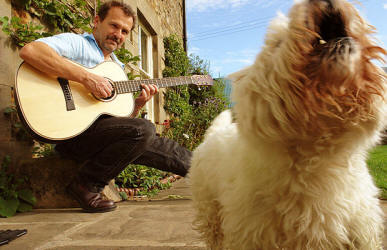
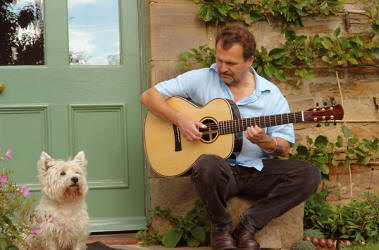
After many years I have finally built my jig for preparing soundboards and backs for joining. It consists of a metal straight-edge, a shelf for a router to run along, and a simple system for locating the wood to be straight-edged.
The photos show how holding the router guide against the straight-edge and moving it along its shelf straightens the side of the wood clamped in position. The two halves of the soundboard are clamped down together and machined in one pass; smaller pieces (as used for scantling or four piece backs) must be straightened individually and are held by a low clamps fastened into the board. They are low enough that the router base can pass over them.
The router cutter used is a large diameter straight sided cutter.
This replaces my previous system of passing the timber over a jointer – not always easy to control with such thin wood.
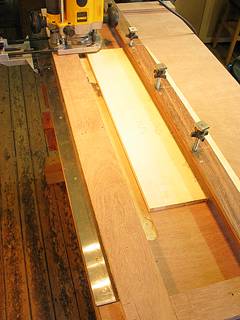
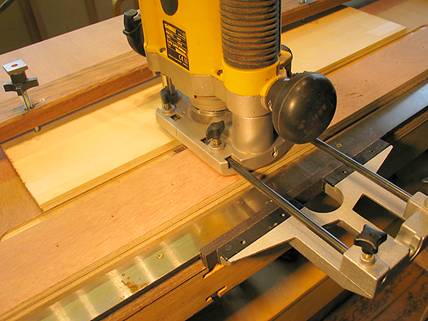
At the moment I’m stringing up two octave mandolins and a Martin Simpson model guitar. This guitar is unusual in that it has a dark old Brazilian rosewood neck, built from the same stock as the Brazilian used on scantling guitars. Below is the neck both before and after carving.
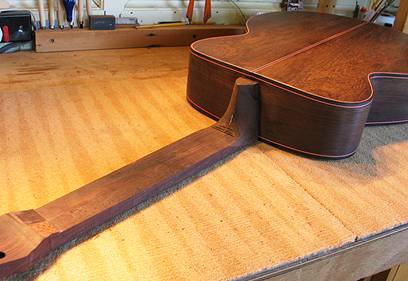
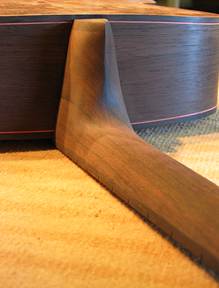
While playing tennis a few weeks ago I fell and hurt my hand. While not a serious injury, it kept me off work for a week or two and is still hampering me. I can only apologise to those of you waiting for instruments.
The tailpiece hold-up is over at last. Here are the first to arrive, two each of mandolin (still to have pins fitted), cittern (also octave mandolin and bouzouki) and guitar.
The guitar tailpieces are made up of the anchor plate (attached to the tail of the guitar) and the string plate hooking onto the anchor plate.
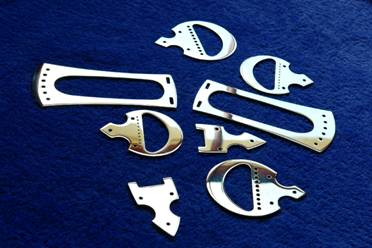
This was the view from my office window at around 7am
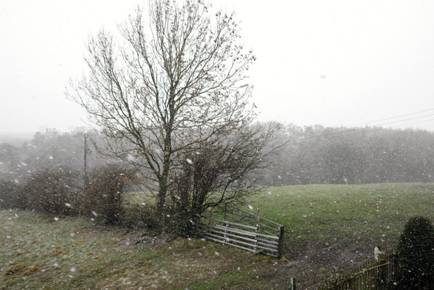
The same view a few minutes later
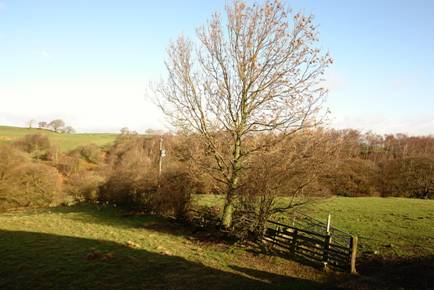
Bill Flatman built my mandolin and cittern cases in the late 1970s and early 1980s. He died unexpectedly on 3rd March. He was just sixty-five years old.
Bill was a farmer who lived and grew up on a hill farm close to Whitley Chapel. When I was looking for fibre-glass cittern and mandolin cases to replace my primitive wooden ones, Bill volunteered and made them in his small garden shed. He had no previous knowledge of fibre-glass but went round the canoe building classes in the North East of England, learning how to lay up fibre-glass and where to find the required components. He rewarded his informants with heather honey combs from his own bee hives. He was an ingenious and enterprising man. I and many others will miss him greatly.

Many people already know of the Fretboard Journal. For those who don’t, it’s a beautifully produced quarterly publication of serious in-depth articles on all subjects concerning fretted instruments.
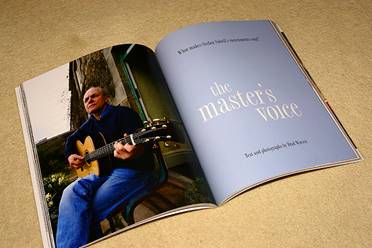
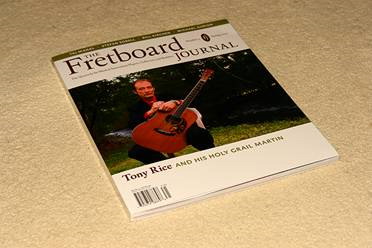
Last summer Brad Warren visited and stayed a few days, talking, asking questions and taking photographs. The picture at the head of my ‘Wood and Materials’ webpage is one of his photographs.
The current issue of the Fretboard Journal includes the article he wrote about me and my instruments. Brad is a good interviewer; his conversation and questions made me think really hard about what I feel and believe is important to instrument building. Brad is also a good writer, his article presents my views well. The article includes an interview he did with Martin Simpson, concentrating on Martin’s use of my guitars and how he views them.
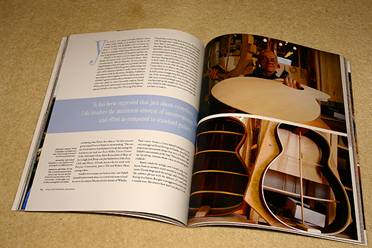
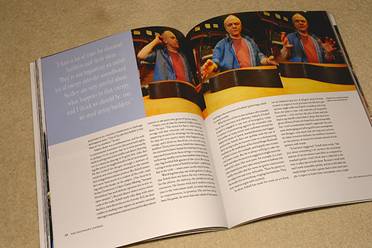

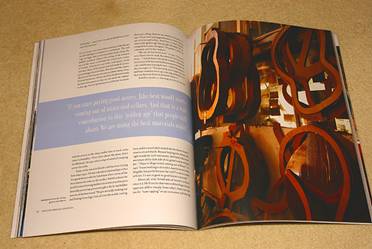
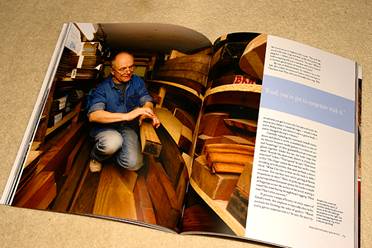

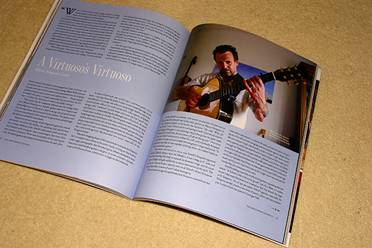
Usually I build two instruments together; this allows me to move from one to the other, working on each instrument while the other is glueing up.
However last week, having bent the sides for a Simpson model and a New World model, I carried on and bent sides for a Parlour guitar simply because I was enjoying bending. Because the three guitars are different sizes, there is no competion for moulds.
Here are all three sets of sides joined at the heel and at the tail. You can see the relative sizes of these guitars; the MS (top) is the same length as the NW but wider, while the Parlour guitar (bottom) is both shorter and narrower than the NW.
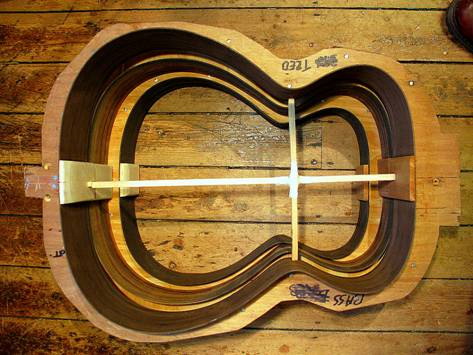
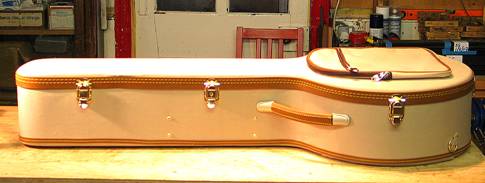
At last I have cases available to fit large bodied citterns and bouzoukis. These are plywood cases with strap pockets, a two piece rucksack type strap and a rather garish yellow interior. They are basic but relatively inexpensive.
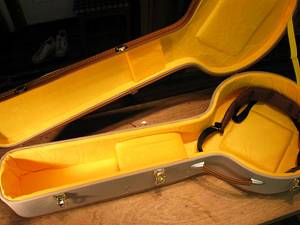
I hope to have Calton cases available for this size instrument in the future, but in the meantime I’m happy to offer these as pictured. The alternative option of using guitar cases lined out to accept citterns and bouzoukis is bulky and expensive.
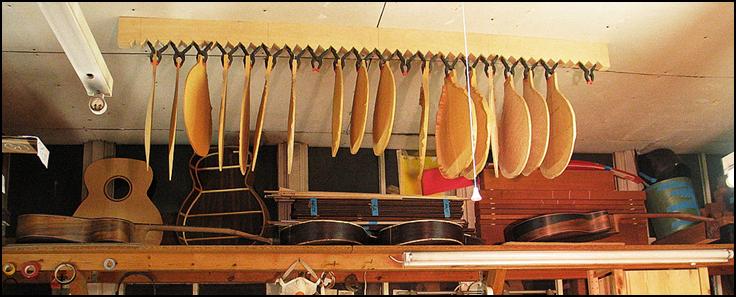
On the shelf: MS D guitar, Model 1 soundboard and body, two cittern bodies, arch-top guitar
[two_third]
In my news item of 1st October I asked for help finding a source for brass tailpieces. I had half a dozen responses all making useful suggestions; I’m grateful for these.
I am now expecting to receive samples in the next couple of weeks, and hope to fit them to completed instruments straight away.
My apologies to all those who are waiting so long for their mandolin family instruments; not only have I had no tailpieces available, I’ve also not found a source of cases suitable for mandolins and large bodied citterns. This problem isn’t yet resolved, but a solution may be on the horizon.
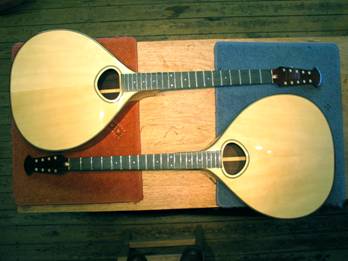
I have just built a 6 string arch-top guitar along with a second Martin Simpson Signature D guitar.
The MS D uses the back (shown in my news item of 15 December 2006) on which I replaced the red/gold/green trim with the MS red/white and ebony. Here it is after final sanding.
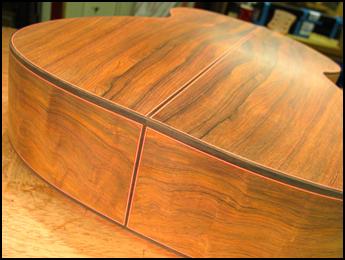
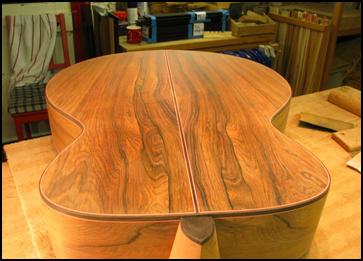
The arch-top is built with the very colourful Brazilian similar to that used on some New World model guitars.
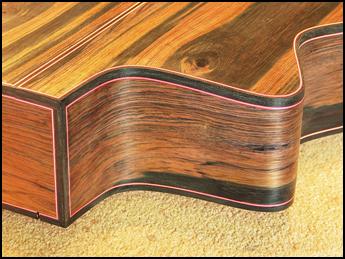
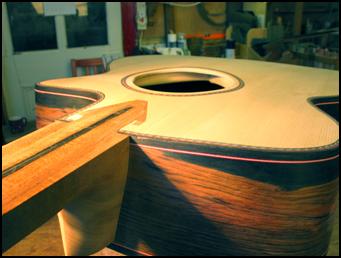
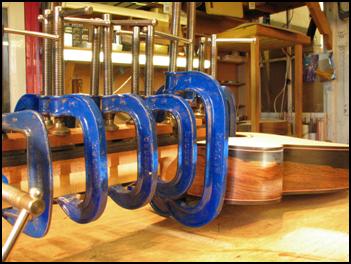
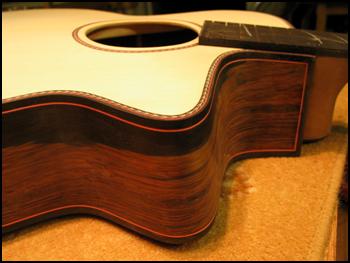
When the citterns currently under construction are finished, I will be building a New World model and a Martin Simpson Signature model.
Finally, even though it’s early February, last weekend was sunny and spring-like (though the week following we had frost and snow). Here are a friend and his son walking into the sunset. We’re far enough north here that sunset is shortly after sunrise at this time of year; the picture was taken at 3 pm.
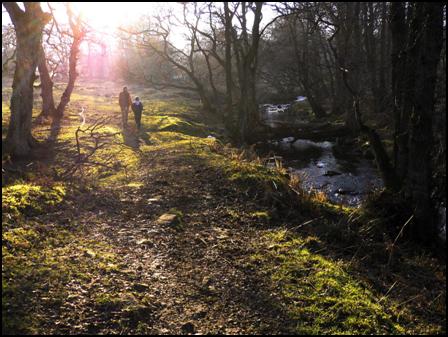
Some time ago I joined a Brazilian rosewood guitar back, fitting a red/gold/green centre trim at the same time. The wood was around 5 millimetres thick and the joined back was sanded down to its final thickness of between two and two and a half millimetres; the exact thickness depends on the individual wood used.
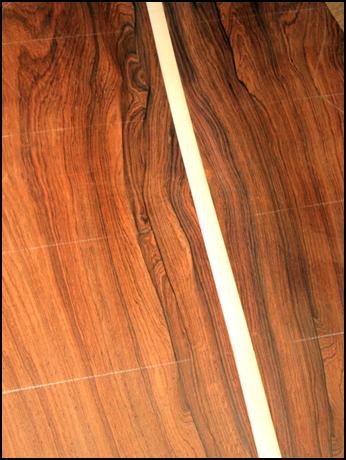
I have now decided to use this Brazilian wood to make an experimental Martin Simpson signature model. This means replacing the existing colours with red and white trim on either side of an ebony strip. However, cutting and re-joining the back around the new trim is tricky, as the wood is already down to its final thickness; any misalignment would mean the back ending up too thin. I decided to replace the trim without separating the two halves of the back; this was possible because the MS trim is wider than the original colours trim.
First I glued the thin spruce reinforcement strip on the inside (left). I laid it reinforced side down on the bench, supported underneath on either side of this strip. Next I clamped a straight flat board over the back, parallel with the centre join, along which I could run a miniature Dremel router (below). I then routed a slot the width of the new trim; this slot was deep enough to just reach the spruce reinforcement underneath. I routed several passes to cut the slot to the correct width and depth.
Since the guide runs along the far side of the board, as long as this is parallel with the centre trim, it doesn’t matter that the near side of the board isn’t straight or smooth
The new MS trim is already made up into one piece, making glueing it in place much easier than fitting seven separate strips. Using the go bar jig I glued the new centre trim in place, making sure it seated to the bottom of the groove (below). The strip is thick and rigid enough not to need additional support when clamping down.
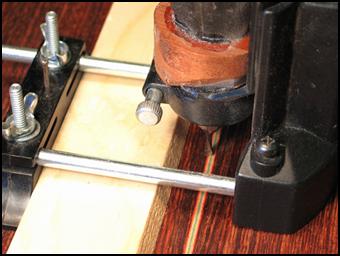
When the glue had dried I was able to take the centre trim down level with the rest of the back (below). It’s now ready for bracing.
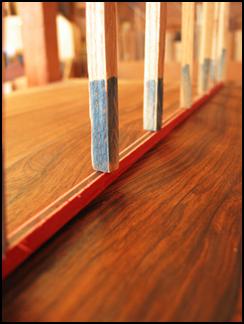
I plan to use this back, along with its matching sides, on a second Martin Simpson long scale D guitar (see my news item of 1st October 2006).
This second guitar will be of similar specification except that it will have an Adirondack spruce soundboard rather than the European spruce of the previous guitar.
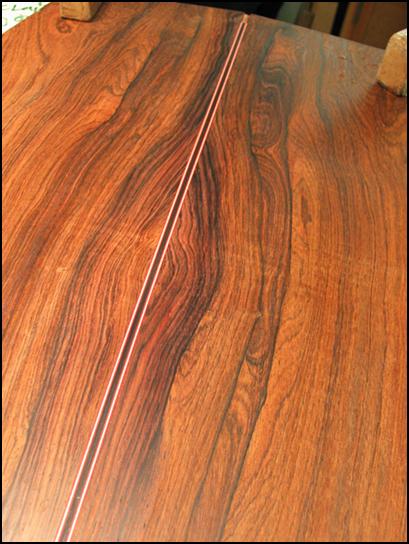
I’ve seen a few of my early instruments recently, and Peter Miller from Argyle, Scotland, brought me his 1977 cittern to attend to. The nut needed raising, otherwise it was perfect playing condition.
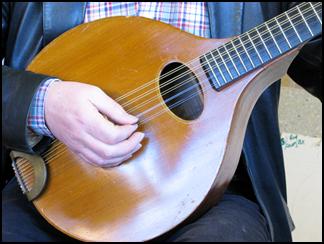
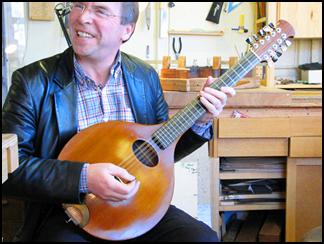
I’ve recently lost some emails, so if you’ve emailed me recently and not received an answer, please send your message again. I’ll get back to you as soon as possible.
Luthiers can be slow getting round to things in general and repairs in particular. There’s an apocryphal story (which could certainly apply to me) about a builder who does ‘repairs while you wait
……and wait……and wait……’
My first guitar bouzouki was designed for Andy Irvine in 1988 and he’s still playing it. It’s had a hard life. It suffered from air travel very early on, bouncing around in an unpadded case and suffering multiple soundboard cracks. Amazingly, with a little glue run in to close these up it’s not only survived the subsequent years of constant travelling and hard use, it’s also still sounding wonderful. But one side of the lower bout was seriously damaged some time ago and had been held together with gaffer tape for months (years?) and really needed attention.
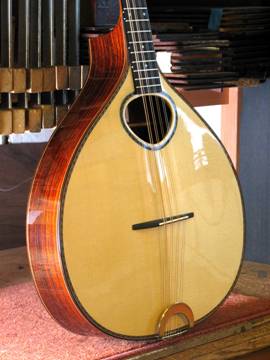
Luthiers can be slow getting round to things in general and repairs in particular. There’s an apocryphal story (which could certainly apply to me) about a builder who does ‘repairs while you wait
……and wait……and wait……’
My first guitar bouzouki was designed for Andy Irvine in 1988 and he’s still playing it. It’s had a hard life. It suffered from air travel very early on, bouncing around in an unpadded case and suffering multiple soundboard cracks. Amazingly, with a little glue run in to close these up it’s not only survived the subsequent years of constant travelling and hard use, it’s also still sounding wonderful. But one side of the lower bout was seriously damaged some time ago and had been held together with gaffer tape for months (years?) and really needed attention.
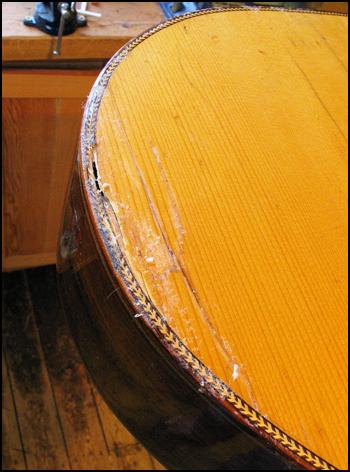
Andy is always working, so he arranged to bring it on his way to starting his autumn German tour. I would have only 24 hours or so to fix it. So no wait….and wait……and wait……was possible.
Here it is with the gaffer tape removed. The soundboard is completely separated from the side for a distance of around six inches, and virtually shredded across a width of something over an inch. The herringbone inlay is also crushed and mangled.

After cleaning off the gaffer tape adhesive I cut out a section of the soundboard and herringbone, following a grain line. You can see the ends of two braces projecting; I added a supporting reinforcement between them which would also locate the new piece of soundboard. The rosewood binding was relatively undamaged, so I left it in place.
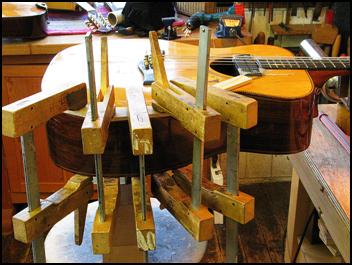
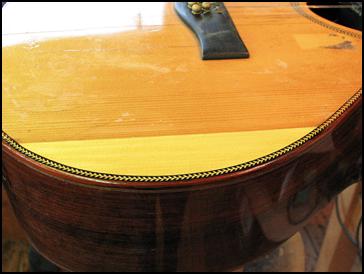
I cut a piece of similar spruce to fit the hole, also cutting the straight edge along a grain line. Here it is being clamped to the side lining, and in the next picture it is glued in place. The grain was a good match for the original soundboard, though I knew I wasn’t going to be able to match the colour and finish in the time available. In view of the characterful condition of the rest of the instrument, neither Andy nor I felt this would be a problem.
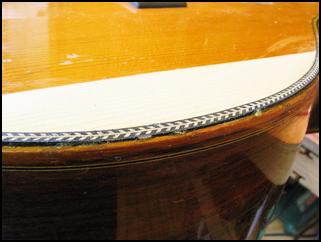
Because I was retaining the original binding I was unable to rout the ledge for the herringbone in the usual way. I cut a slot with scalpel and chisel, and cut and bent a length of herringbone to fit. Here it is glued in place, ready to be trimmed flush.
Not having time to ask David to spray it (this would involve several days drying time) I wiped several coats of shellac lacquer onto the new piece of spruce. This will seal it and protect it from grease and moisture, and while in no way matching the original finish, it tones down the whiteness of fresh wood.
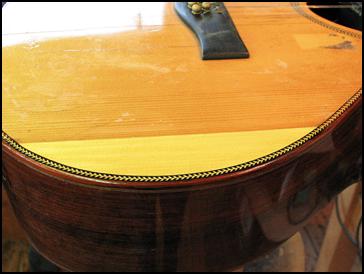
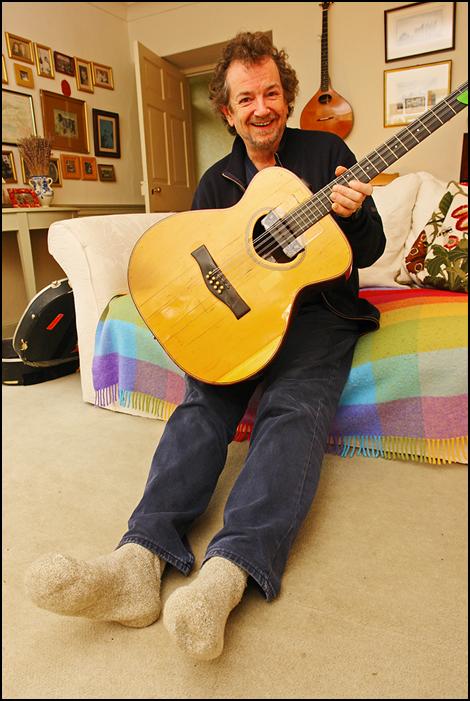
Finally, here is Andy with his repaired instrument. Good as new, as is the guitar bouzouki.